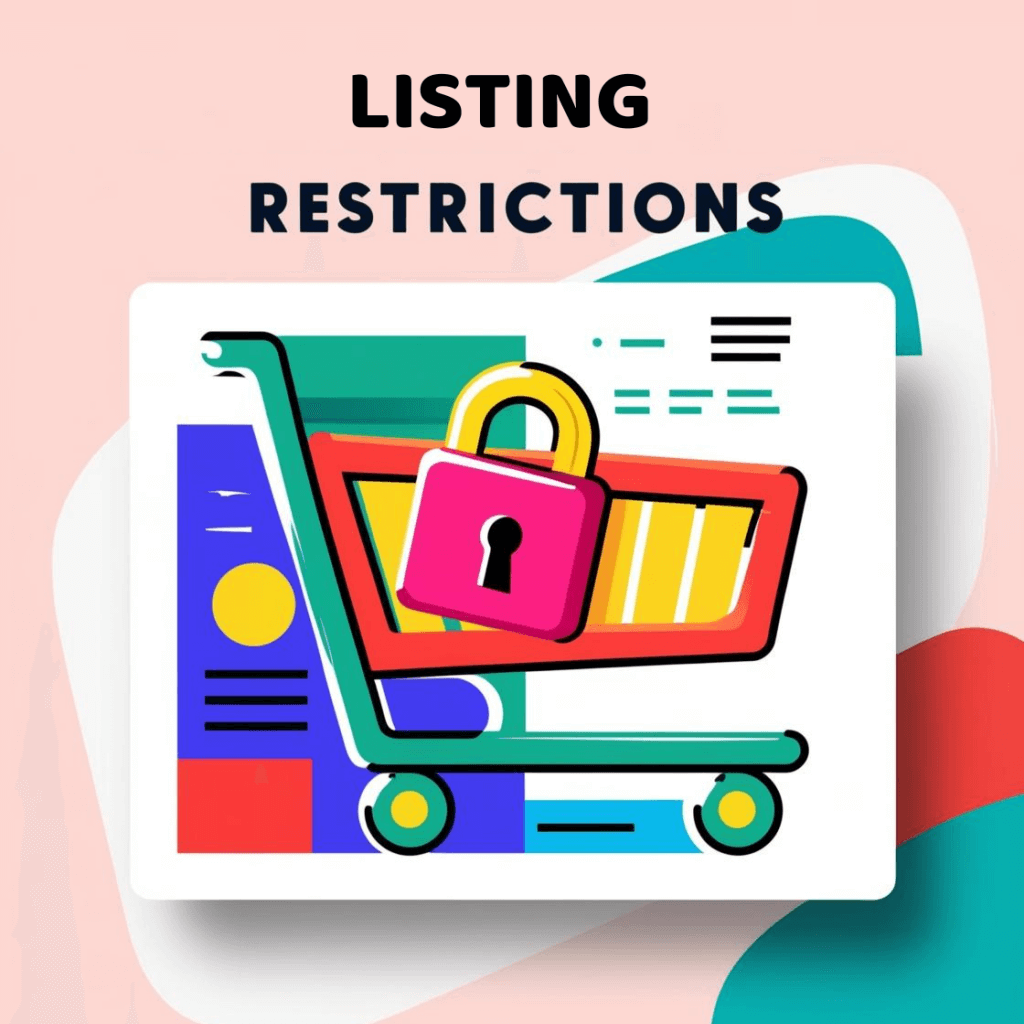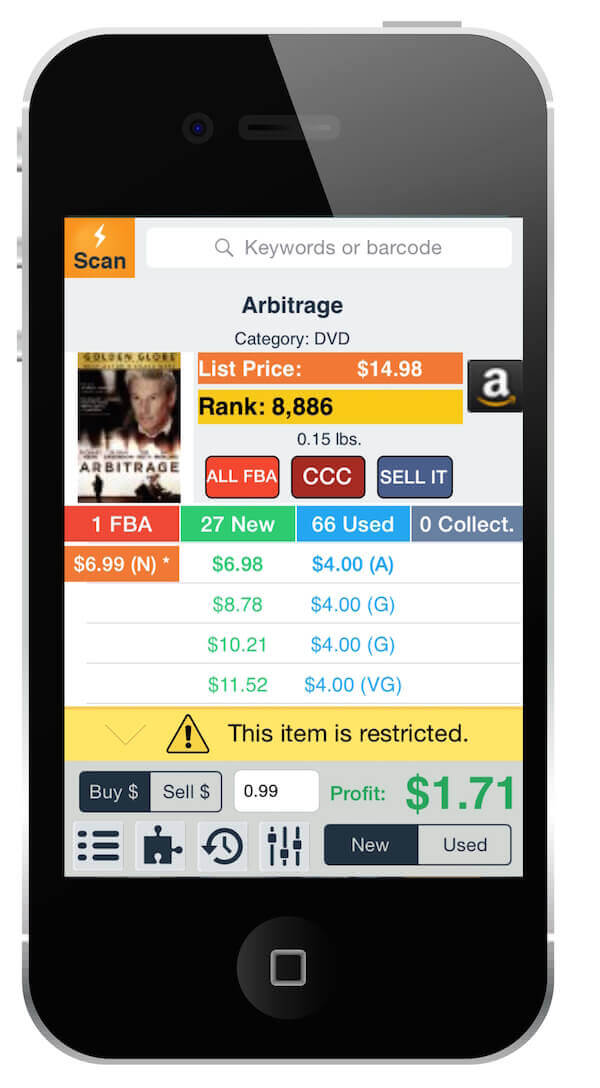
Winter is coming, along with more restrictions and suspensions. What better time to read up on the basics of Amazon listing restrictions for brands, categories, and products? Join us for tips on how you can manage Amazon product restrictions so that you comply with current policy and keep your seller account running smoothly this sales season.
Selling on Amazon can be a boon for your business. But not if you stumble upon selling restrictions and other compliance issues. In today’s post, we’ll help you understand what Amazon listing restrictions are, why they are in place, and how you can identify products you can’t sell on Amazon before it’s too late.
The Purpose of Amazon Listing Restrictions
Amazon listing restrictions are designed to safeguard quality, IP rights, and consumer safety. They are in place so that only high-quality and authentic products are sold on Amazon. And only with permission from the rights owner and in line with the relevant laws and safety standards.
They first cropped up in 2016. Entire categories were suddenly off limits to sellers in a process called ‘category gating’. A year later, Amazon launched Brand RegistryAmazon Brand Registry is a tool that ena… More 2.0 so that brand owners could single-handedly ban sellers from their listings.
Then came Amazon’s ‘brand gating’ campaignSellers and vendors have a variety of ad… More. Sellers were asked for proof of resale rights. This closed off even more sub-categories. Nowadays, only a handful of products are open to sellers (‘ungated’), as explained in this post.
Types of Amazon Listing Restrictions
Aside from items like stationery, books, and home essentials, most types of products are ‘gated’ on most Amazon marketplaces. And even then you can come across some limitations or temporary restrictions. Such is the case with toys over the winter holidays or beauty products. But that’s not all…

When it comes to gated Selling certain products and bran… More categories on Amazon, the rules aren’t the same on every marketplace and they can change without notice. Also, a category may be open (e.g., Video Games), but some of its sub-categories (e.g., PlayStation 4) are not because virtually every label (e.g., Sony, EA) is ‘gated’.
Why does it all matter? UngatingPlease see “Gated” a category is not the same as ungating a brand. The Amazon approval process for gated categories is more of a formality. But ungating a brand with fees and authorization letters. More on this in the official Amazon Seller University tutorial.
That said, many other products are ‘gated’ or off limits to sellers. Unsurprisingly, there’s some confusion as to what’s banned, restricted Selling certain product categorie… More, illegal, etc. Here are some of the types of listing limitations that you may come across on Amazon:
- Restricted products are deemed illegal, unsafe, recalled, counterfeit, misleading, not labeled in English, etc. The list can include just about anything, from firearms to stamps.
- Restricted listings don’t comply with industry regulations in terms of marketing, safety, and liability. They may include phrases like “satisfaction guaranteed”, “Made in the USA”, or “anti-microbial”, but without the papers or certifications to back up these claims.
- Restricted services typically apply to craftspeople, tech startups, and sellers who offer Subscription Boxes.
- Restricted ads are subject to limitations and licensing based on the location, device, or type of content.
- Prohibited ads are for products or services considered dangerous, addictive, or otherwise unsuitable to a young audience.
- Restricted parties are barred from selling on certain marketplaces and Amazon BusinessAmazon Business is Amazon’s wholesale … More shoppers can choose not to view offers from debarred sellers.
- Restricted FBA products are hazmat, meltable, expired, and prohibited under federal law.
- Restricted ASINs can’t be listed for reasons known only to Amazon.
- Restricted brands on Amazon are those that can’t be listed by any third-party sellers.
- Gated Selling certain products and bran… More categories and subcategories include collectibles, fine art, and automotive items. These come with hefty non-refundable fees, aside from revenue and QA testing requirements.
- Gated brands are brands that Amazon may allow you to sell in exchange for a fee, provided you meet the criteria.
It’s important to understand how to handle Amazon’s gated categories and restricted products. Otherwise, you risk having your listings canceled or your account suspended. Even if you file an appeal and it’s successful, you can’t undo the damage. So, let’s look at ways to avoid, lift, and manage Amazon product restrictions.
How to Manage Amazon Product Restrictions
If you’re wondering how to handle Amazon’s gated Selling certain products and bran… More categories and restricted Selling certain product categorie… More products, we must first stress that prevention is better than cure. It’s every seller’s responsibility to check that an item can be sold on
Check Amazon’s Restricted Selling certain product categorie… More Product Lists
Before you list anything problematic, check Amazon’s documentation on restricted products and categories. There’s no shortage of Amazon restricted categories guides and tips on gated Selling certain products and bran… More products, including this list of brands from The Selling Guys or our list below.

Update Your Knowledge Base
To prevent your listings from being flagged or removed, check Amazon’s policies and updates regularly to stay on top of the latest restriction changes. Subscribe to our newsletter and come back to the Amazon restricted Selling certain product categorie… More categories guides on our blog whenever you need to refresh your memory.
Spruce Up Your Seller Metrics
Be sure that your seller metrics are up to par in case you need to ‘ungate’ an item. Odds are you’ll apply to sell in a category or under a specific brand. So, build up at least 3 months’ worth of sales and then keep your Professional selling plan active, your ODR under 1%, and your account in good standing.
Use Seller Tools
Using technology is another way to do your due diligence before you stock up on any items or try to sell in any gated Selling certain products and bran… More categories on Amazon. While there are no specifically designed Amazon compliance tools, there are many that can help you fine-tune your purchase orders.
Tools like Profit Bandit and Sellery can help you identify restricted Selling certain product categorie… More items as soon as you see a product. They flag up restrictions in real-time, providing detailed information on anything that can’t be sold on Amazon without approval. We’ll expand on this point below.
Managing Restrictions with Amazon Seller Tools
Profit Bandit
There’s no way to check on Amazon if a product is restricted Selling certain product categorie… More before you start listing it. To avoid getting stuck with inventory you can’t move, consider using a scouting tool like Profit Bandit. It gives you a sneak peek at your item’s restrictions as soon as you scan the barcode or type in its ASIN.
Simply log in with your Professional selling account, input the barcode, and an alert will pop up if the item is restricted for your account specifically, on the venue or in the region in question. It provides information on your specific restriction, so you never get stuck with items you can’t sell.
Information from Profit Bandit on restricted products is available to you not only for a specific item, but also for similar products. If you want to stock certain types of products or carry a brand, you can look up items within a given category or with a given brand from across Amazon’s catalog.

| Note: Profit Bandit checks Amazon listings for this information. It can show you restrictions on any item, but only if it exists in the Amazon catalog already. |
Sellery
You can use Sellery to research inventory you already own, as well as products you’re thinking of buying. So, before you send a purchase order to your supplier or buy an item you think might sell well on Amazon, run it by Sellery.
It will tell you if something’s wrong right away, so you don’t waste time and money analyzing, buying, pricing, listing, and stocking restricted Selling certain product categorie… More items. In Sellery restricted products are clearly signposted with notifications and visuals.
BuyBoxBuddy
With BuyBoxBuddy, you can easily tell which items are risky. Neatly filtered and sorted into the “Not Listed” Smartlist, restricted Selling certain product categorie… More items will catch your eye right away. Simply click on the Smartlist to access the relevant ungatingPlease see “Gated” information for every item on the list.
7 Key Takeaways
- Amazon listing restrictions are really important and can lead to suspensions.
- They can vary across marketplaces and from one seller to the next.
- They apply to products, services, ads, brands, categories, and specific ASINs.
- You can only apply to lift a restriction through Seller CentralAmazon Seller Central is a portal or a h… More.
- Restricted Selling certain product categorie… More product policies change all the time.
- You can automate this aspect of compliance to save time and resources.
- Tools like Profit Bandit and Sellery can quickly identify and manage restricted items.
Understanding how to handle Amazon’s gated Selling certain products and bran… More categories and restricted Selling certain product categorie… More products is key to maintaining compliance and avoiding penalties. So, be proactive. Review Amazon’s policies regularly and apply for category and brand approvals whenever necessary.
Why not go one step further and sign up to our monthly newsletter? Keep up with the latest Amazon policies, listing restriction updates, and tips for successful selling.
And don’t forget to subscribe to our blog for news, guest posts, and insider tips.

Melanie takes an active interest in all things Amazon. She keeps an eye on the latest developments and keeps Amazon sellers up to speed.




